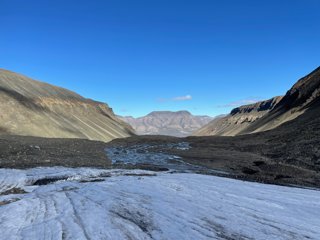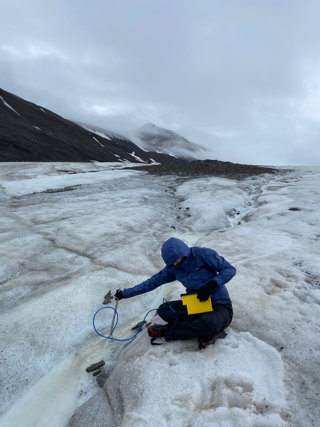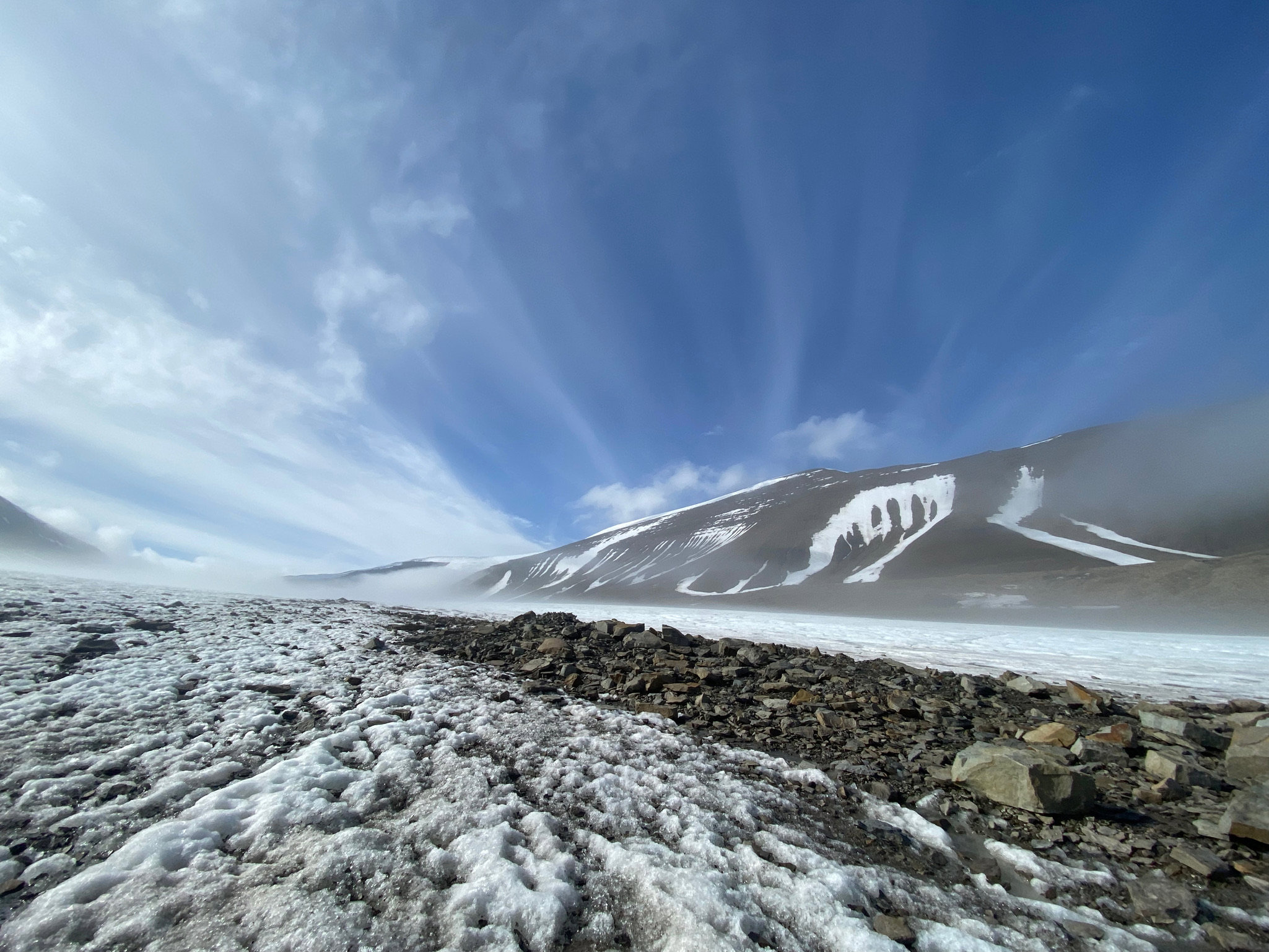In summer 2022, Stage 3 Geography students Eleanor and Rebecca spent a month on Norway’s remote Svalbard archipelago, carrying out research on the Longyearbreen glacier for their dissertation. This is their reflection on what they found and why it’s important.
Our world is changing rapidly, and over the past 50 years Svalbard in the High Arctic has been warming twice as fast as the global average, with its northernmost settlement of Longyearbyen its fastest warming town.
Studies of glaciers here are increasing due to the profound effects of climate change, so we wanted to research and experience a portion of the summer melt – or ablation – period.
As part of our BSc Geography dissertation research, we were lucky enough to spend a month in Longyearbyen. The glacier of interest, Longyearbreen, is situated just behind the town and we conducted our fieldwork here from 17 June – 17 July.

Project aims
The aim of our project was to quantify the impact of climate change on Arctic glacial meltwater streams. The hydrochemistry of these contains valuable information about Longyearbreen’s internal hydrological system. This enabled us to figure out how the water is routed through the glacier and classify the thermal regime.
We looked at the suspended sediment load in the meltwater streams, determining how the amount of sediment within the streams changes over the course of the melting season. We also looked at the discharge and climate over the month to build a broader picture of how the meltwater channels respond to climatic changes.
These factors are critically important to study as they help us understand the hydrological processes within the glacier, which can tell us how it is behaving in terms of movement, melting and the effect on downstream water systems.

What we observed
We were able to view changes to the Svalbard landscape as the temperatures increased.
During our fieldwork, it was evident how the glacier changed in terms of the meltwater streams and how ‘dirty’ the ice looked. Meltwater streams changed route and size on a daily basis, some even changing between morning and afternoon.
This highlighted to us how powerful the impact of more of the sun’s rays affecting the surface and temperature changes in the Arctic are, since the volume of meltwater and its power on the glacial ice quickly increased as we got further into the summer.
We did not expect to see these changes so quickly! The snow cover on the high mountain tops melted within days and the tundra greened up day by day. Every year, as the melt occurs a vicious cycle starts, as the land reflects less sunlight and absorbs more heat, crucially impacting the High Arctic environment.

Impact of Arctic tourism
What was most surprising was the number of tourist ships and flights into Longyearbyen.
Motivated by seeing the Arctic before it changes, 124,000 tourists visited Svalbard in 2019* – the aeroplanes and ships they arrive in, and the hotels they stay in, rely heavily on fossil fuels which has a huge negative environmental impact.
We were not expecting to see Longyearbyen overwhelmed by people travelling in by cruise ships every other day, especially as this is such a climate sensitive region. The Governor of Svalbard has a goal to protect the environment and this is enforced by law, but in our opinion, allowing high numbers of tourists counteracts this.
Understanding climate change
From carrying out research in the field to studying in the lecture theatre, we have learnt the significance of how the Arctic is warming faster than anywhere else in the world.
This was visible during our stay as, on most days hiking up to the glacier, we were just in t-shirts – one of the days it was 17C! We were so surprised by this as we had expected to be wearing down jackets and lots of layers for the majority of our stay.
Hopefully, the research we will produce for our dissertation will give some statistical evidence of these changes, so we can contribute to building a bigger picture of the effects of climate change on such sensitive environments.
Comparisons with previous studies can also help generate important information about Longyearbreen and other High Arctic valley glaciers – how they may be responding to climate change and the possible outcomes for future climate scenarios.
From our experience, Svalbard is a key area of climatic study to understand the effects of global warming. Arctic glaciers are changing fast with earlier and longer melt seasons causing local and global implications now and into the future.
This post is adapted from an original publication on Newcastle University's Belong Blog.
Geographical Fieldwork Grant
Eleanor and Rebecca's research was supported in part by a Geographical Fieldwork Grant.
Find out more about the full range of grants available to support students and researchers with their fieldwork.


